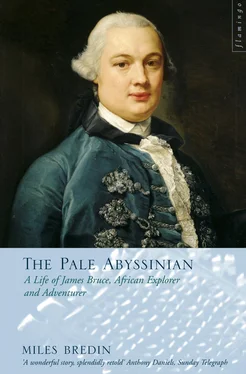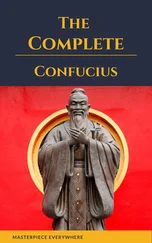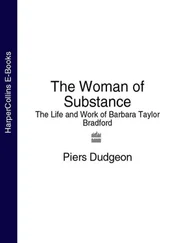1 ...6 7 8 10 11 12 ...19 Bruce observed the ancient ruins and continued his studies but still no news came from England. He whiled away his time seeing friends at the Caffé degli Inglesi and sitting for the fashionable painter Pompeo Batoni in an expensive bid to make sure Margaret Murray did not forget him:
I begin sitting to-morrow to the best painter in Italy; but as he only paints in oil, I am obliged to sit for a head, as it is called … and the miniature is to be copied from that picture by the best painter of miniatures in Italy, who is a lady [the society artist Veronica Stern]. This is as certain a way of your having as good a picture as the subject will admit of
In the absence of instructions, most of August was occupied with the strenuous task of sitting still in the studio of the eighteenth-century’s equivalent of Snowdon.
For six months he travelled around the various nation states of pre-unification Italy on a short but busy Grand Tour. Bruce took his visit seriously; according to his first biographer, Alexander Murray, who edited the second edition of the Travels, much of Bruce’s time in Florence was spent attending art lessons.
Although amateur archaeology had been enjoying a great vogue among Britain’s Grand Tourists since the 1747 discovery of Pompeii, Bruce also studied the ruins in more detail than was the norm. At Paestum he made some architectural drawings which he even hoped to publish but the project never progressed further than the plate-making stage. The then British Resident and Walpole’s correspondent Horace Mann (later to delight in the title of Envoy Extraordinary and Plenipotentiary to the court of the Grand Duke of Tuscany) had him to stay in Leghorn (Livorno) and Florence where Bruce, like many other visitors had an audience of the Grand Duke. In Bologna he met the artistic patron the Marquis di Ranuzzi and renewed friendships with his distant cousin Andrew Lumisden and with Robert Strange.
These last two were great Jacobites who were in cautionary exile but eventually returned to Britain before Bruce. Strange and Lumisden – as exiled brothers-in-law – were extremely close. They used to reply to each other’s letters and eventually merited a joint biography. Lumisden had been the Young Pretender’s private secretary; Strange, a fine artist, was denied membership of the Royal Academy because of his Jacobite leanings and thus did not receive his deserved knighthood until 1787. His exile was expensive and it stifled his real artistic leanings by forcing him to concentrate on the more profitable task of making engravings of the classics, which sold in huge numbers. He is now more famous for his financially necessary engravings, particularly his Stuart bank notes which would have become the currency of Scotland and England had the ’45 rebellion succeeded. Strange, more of a thinker than a fighter, had been coerced by love into fighting for the Jacobites at Falkirk and Culloden. Had he not, he would never have won the hand of Andrew’s sister, the fervently pro-Stuart Isabella Lumisden. Even then, the romance did not truly blossom until Strange found himself being hounded around the Highlands by Cumberland’s soldiers. He escaped detection only by hiding under Isabella’s skirts, whilst she steadfastly insisted to the officers searching the building that she had not seen the fugitive. Brought together in adversity, they had a long and happy marriage and were charming enough to overcome Bruce’s Hanoverian instincts. The Stranges became Bruce’s closest lifelong friends.
It was January of 1763 before Bruce was ordered to Naples, where his very arrival prompted the Grand Master of the Knights of Malta to send an ambassador to the Court of St James’s, seeking absolution for appeasing the French. Sadly for Bruce, the ambassador in Naples was still Sir James Grey rather than the great collector, dancer and cuckold Sir William Hamilton but he did not have to stay long. The apologies of the Maltese Grand Master were promptly accepted and in February Bruce received orders to proceed to his posting aboard the British warship Montreal. These were the days of scurvy, powder monkeys, imprecise longitude measurements and colossal, top heavy, wooden sailing ships – dangerous enough for sailors but especially miserable for Bruce who suffered severely from seasickness. We know this from the letters of friends. James Turner, a trader in Cyprus, wrote to him in 1767 saying, ‘the calms you had at sea must have been disagreeable to you who suffers so much at sea’. Bruce’s willingness to jump on and off boats in the Travels, never mentioning his acute discomfort, is admirable. One wonders what other rigours he silently endured.
On 20 March 1763 Bruce arrived in Algiers as His Majesty’s Consul and Agent to Algier’. One senses that Bruce had been all but forgotten in the preceding eight months and that it had taken the prompting of his friend Wood to have him sent to Algiers at all. It would not be long before Whitehall had to sit up and pay attention. The world’s most unsuitable diplomat had just arrived on station in a posting that he was most unlikely to understand and was even less likely to tolerate. The historian of the Barbary States, Sir Godfrey Fisher, later lambasted Bruce:
Official indifference at home, complicated doubtless by naval wars, corrupt practises at Gibraltar and Minorca, and the active hostility at Algiers of Aspinwall [Bruce’s predecessor] and Bruce, contributed to the extinction of British interests, commercial and maritime along the southern shore of the Mediterranean.
The Barbary States on the northern littoral of Africa were a motley conglomeration of city states, separated by warring tribes who relied almost entirely on systematic piracy for their livelihoods. In their glory days the city’s corsairs had performed such memorable feats as the sack of Barcelona, but by this time in their history – nominally under the control of the crumbling Ottoman Empire – they were in precipitous decline. They were still known, however, as the ‘Scourge of Christendom’. Bruce’s job in Algiers was to maintain the treaty that had been forged in 1682 which allowed Britain to trade in the area without fear of molestation by the pirates of Algiers. Occasionally he would be asked to intercede on behalf of people who had been captured and taken into slavery but his main role – and the most important one in the eyes of his government – was that of maintaining the treaty. This was something that he managed to overlook in his treatment of the Algerians and it was to land him in a great deal of trouble. Believing, as he did, that Britain was the greatest country in the world, he tended to ignore the importance of maintaining the treaty when he was petitioning for the release of slaves or the compensation of widows (something that took up more and more of his time). To the British government the treaty was all, but to the inadequately briefed Bruce, the recipient of constant begging letters from the relations of enslaved Europeans, the treaty was of secondary importance to his humanitarian role. Moreover, he and the equally unprepared vice-consul William Forbes had no one to show them the ropes. An Irish merchant, Simon Peter Cruise, the man who should have been most helpful, had been consistently defrauding the unfortunate petitioners for years. As soon as Bruce discovered this, the pair became mortal enemies. For the first year, though, all was relatively peaceful.
The new consul kept himself occupied by perfecting his grasp of the Arabic language and Arabic customs. He gave the occasional dinner party for Aga Mahomet, the Dey’s brother, and his then friend Mr Brander, the Swedish consul. He also learned modern Greek from Father Christopher, a Greek Orthodox monk, who, having fallen upon hard times, came to live in the consulate as a chaplain-cum-tutor. He met with the traders to whom he had special access through Masonry (Algiers would become even more of a hotbed of Masonry in the early nineteenth century). Now and again he sued an Algerian for the return of enslaved Englishmen. It was a pleasant start to his term of office. He wrote long, chatty letters to his friends Strange and Lumisden and even to Mr Charron, a caterer in Leghorn who kept Bruce’s larder stocked with cases of wine and huge quantities of Parmesan cheese. It was not long before he forgot young Margaret Murray. Indeed, he seems to have made no contact with her in all his travels. Within a few months of his arrival, he was complaining to Charron about the lack of women, a predicament with which Charron sympathized:
Читать дальше











